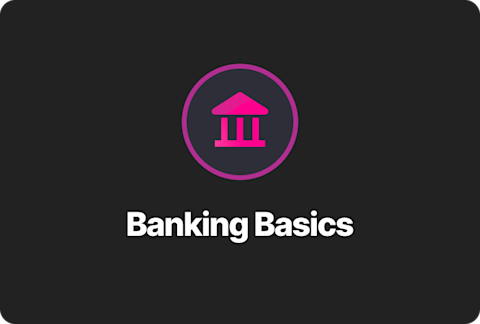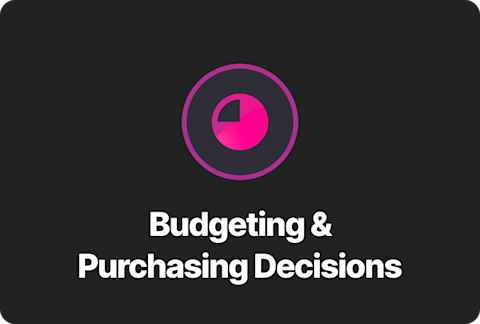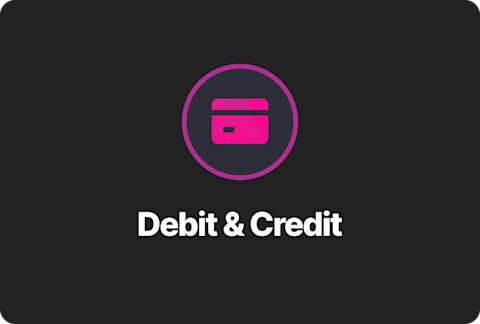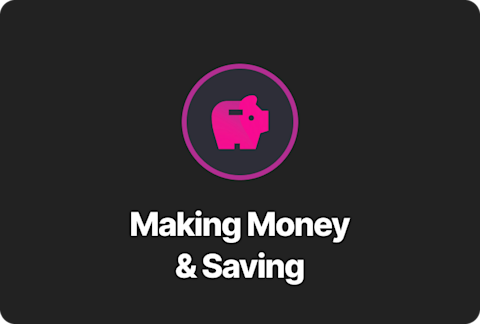What the budget?!

While budgeting seems easy in theory, it’s often much harder than it looks. Today, 76% of teens and young adults say they use a budget, but as we saw in our holiday shopping report, many admit they have trouble sticking to it. So, if you’ve had similar struggles with budgeting, you are not alone!
Unfortunately, most people aren’t being taught about money management in school, leaving them to figure things out on their own. And, with fewer people using cash –– favoring things like debit cards, credit cards and Apple Pay –– it can be especially difficult to learn how to budget with digital money that you can’t see or touch.
Step is here to help! Learning how to budget is a critical life skill that everyone needs as they work towards achieving or regaining financial independence. To help get you started, we’ve put together a modern-day guide to budgeting so you can reach your goals and ensure money never gets in the way!
How to create a budget in 5 easy steps
For starters, a budget is like a roadmap for your money. It helps you plan how much to spend and save each month, tracking your progress along the way. While budgets aren’t magic, sticking to one will lead you to financial freedom and eliminate a lot of stress. Below, we’ve outlined the key steps for creating and sticking to a budget.
Gather all your financial records
Before we get started, gather up all your financial records. This may include things like paystubs, sales receipts, bank statements (if you have them) and your piggy bank or change jar. The goal of this exercise is to figure out how much you’re saving versus spending each month to determine your monthly average. The more information you can dig up, the better.
Calculate your monthly income vs. expenses
Grab your phone or calculator and start by adding up all your income (the amount of money you receive on a regular basis). This may include things like a paystub, allowance, babysitting or lawn mowing money. The total amount (or sum) you come up with is your income.
Next, let’s figure out how much money you’re spending every month. Comb through any sales receipts you have lying around, and if you have a bank statement, total up all the purchases you made (which will be marked with a minus sign). Once you’ve added everything up, this amount represents your expenses.
Then, take your income and subtract your expenses to see what you’re left with each month - this is called your savings. Repeat this exercise going back as many months as possible to get a good idea of what your monthly average spending versus savings is. If you only have one month’s worth of information handy, that’s okay too. You just need somewhere to start.
Pause here and take a moment to reflect on this information. Are you happy with the numbers you see? For example, you may be spending more than what you’re earning each month, relying on your savings to cover the difference. On the flip side, you might be saving way more money than you thought. Taking stock of your financial life and setting a few goals is a key part of the budgeting process.
Determine your financial goals & consider how to reach them
Now let’s talk about those goals and how to achieve them. Whether you’re saving up for a new phone, car or college tuition, it’s important to understand what those goals are and how much money you need to reach them. Once you have a few ideas in mind, take a second look at your income and expenses to see where changes can be made.
For example, perhaps you could pick up a few additional shifts at work or consider raising your hourly rate for babysitting or lawn mowing. Over time, making these small changes could really add to your savings goal.
Next, take a look at your expenses and figure out which are fixed (costs that remain the same every month) versus variable (costs that change from month to month). For example, your Netflix subscription will cost you the same amount each month whereas the amount of money you spend at Starbucks is likely to change based on how often you go. Take some time to review these expenses and think about places where you can cut down.
Start with your variable expenses since you have more control over those. That being said, you might also consider downgrading your Netflix subscription or cancelling other membership programs you rarely use (check out more savings tips here).
When it comes to your savings, beyond setting money aside for the things you want, it’s also important to have some money stashed away in what’s called an emergency fund. This can be used to pay for surprise expenses like car repairs or a loss of income. We typically recommend that you add to this fund every month until you’ve built up three months’ worth of income.
Choose your budgeting method
Now that you have a complete picture of your financial life, including the goals you’d like to achieve, it’s time to decide how you’ll keep track of your progress. While you can use an old-fashioned pen and paper, we recommend using a budgeting app or spreadsheet - it’s so much easier!
Check in on your progress regularly & make adjustments
You’ve done all the hard work and now it’s time to put your budget into practice! Set aside a regular time to check in on your budget so you can make adjustments as needed. If you’re just starting out, you might want to take a look at your finances on a weekly basis. Then, once you’ve got the hang of things, you could move to a monthly cadence.
Ultimately, a budget only works if you’re honest about your spending and set realistic expectations. However, building up this muscle takes time, so don't be too hard on yourself if you occasionally overshoot your budget. By practicing these habits regularly, they’ll become second nature. The key is to get started!
In the meantime, if you’re interested in learning about more tips and tricks for managing your money, check out Step’s Money 101 page.








